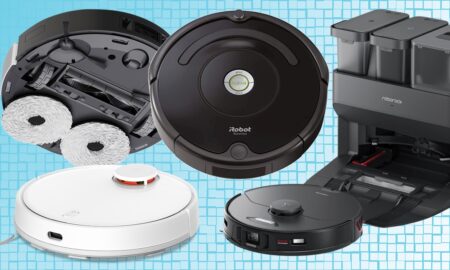A detailed explainer on how we test smart video doorbells, in order to deliver our comprehensive reviews.
Video doorbells have emerged as a pivotal component of modern home security, offering convenience, connectivity, and peace of mind to homeowners.
These devices combine advanced features such as live video streaming, motion detection, and two-way audio communication.
With so many different smart doorbells now available, across a range of price-points, rigorous testing processes for our reviews are essential to guarantee the reliability, functionality, and performance.
Here at The Ambient our unwavering commitment to being the leading authority on smart homes extends to our meticulous testing and insightful reviews of smart video doorbells.
Here’s how we do that…
Installation
The review process at The Ambient atakes into account the ease and versatility of the installation process for each video doorbell.
This includes evaluating whether the doorbell requires a wired connection or operates on batteries, as well as whether it necessitates an existing chime or comes with its own.
We asses whether the installation involves complex wiring or if it’s as simple as screwing it in or embedding it into a wall.
A user-friendly and straightforward installation can greatly enhance the overall user experience, making it accessible to a wider range of homeowners with varying levels of technical expertise.
Live Video Streaming Quality
A core feature of video doorbells is live video streaming. Testers meticulously evaluate the quality of the video feed under various conditions, such as different lighting environments (day and night) and internet speeds.
This testing ensures that homeowners receive clear, real-time visuals of their doorstep, allowing them to identify visitors or potential threats effectively.
We look at a number of factors, including resolution, frame rate, dynamic range, color reproduction, night vision, noise and more.
We’ll analyze footage across a broad spectrum of conditions, from night and day, in as many weather types as possible and, where possible, we’ll provide video evidence within the review itself so as our readers can look at the quality themselves.
Motion Detection Accuracy
Motion detection is crucial for alerting homeowners to any activity at their doorstep.
We create scenarios to assess the doorbell’s motion detection accuracy, evaluating its ability to differentiate between humans, animals, and other moving objects.
Two-Way Audio Communication
Effective communication is key to the utility of video doorbells.
We evaluate the audio quality and latency of the two-way communication feature, enabling homeowners to interact with visitors remotely.
It’s very important that users can have clear conversations with guests, delivery personnel, or potential intruders, enhancing the overall security experience and our testing period reveals whether this is possible or not.
Native apps
Seamless use with mobile apps is crucial for user accessibility. Our review team assess the responsiveness and user-friendliness of the doorbell’s mobile app.
They verify that users can quickly access the video feed, control settings, and receive notifications, allowing homeowners to stay connected to their doorstep from anywhere.
Compatibility Testing
Compatibility testing is crucial to ensure seamless integration with various devices and platforms.
We test the doorbells’s ability to integrate with smart home ecosystems like Amazon Alexa, Google Assistant, and Apple HomeKit, to see if users are able to control them through voice commands and mobile apps.
Network and Connectivity Testing
Video doorbells rely on network connectivity for remote access and real-time notifications.
Our review team assess the device’s performance under different network conditions – from wired Ethernet connections to weak Wi-Fi signals.
We assess whether the doorbell can quickly establish a connection, maintain stable streaming, and handle network fluctuations without compromising the user experience; and what resolutions the camera can handle with the bandwidth provided.
Battery Life and Power Management
Video doorbells often operate on batteries or wired connections. Testers analyze the device’s power consumption and battery life, ensuring that it can operate reliably for extended periods without frequent recharging or replacement.
Weather Resistance and Durability
Video doorbells are exposed to the elements, so testers evaluate their weather resistance and durability.
The device undergoes tests involving extreme temperatures, rain, humidity, and other environmental factors to ensure that it can withstand outdoor conditions without compromising performance.
Security and Privacy Measure
Security remains a top priority. We assess the doorbell’s security features, including encryption protocols, secure login mechanisms, and protection against hacking attempts.
Privacy concerns are also addressed by evaluating data handling practices to safeguard user information.
Conclusion
Through rigorous assessment of live video streaming, motion detection, two-way audio communication, mobile app integration, power management, weather resistance, and security measures, we aim to evaluate whether that these devices elevate home security while providing seamless connectivity.
We turn these complex evaluations into comprehensive and compare the video doorbells that we’re testing to alternatives already in the market, while at the same time considering that all important price-point.





